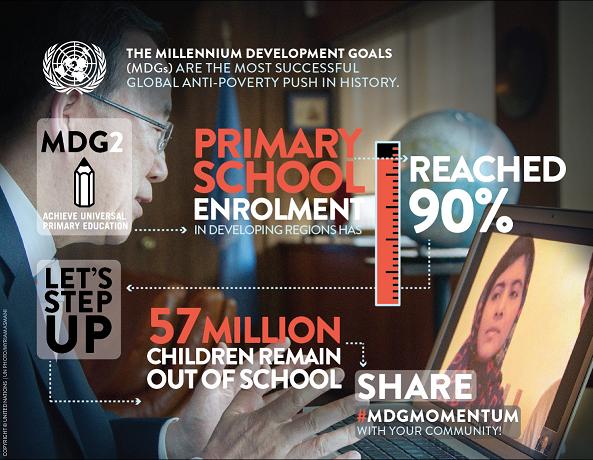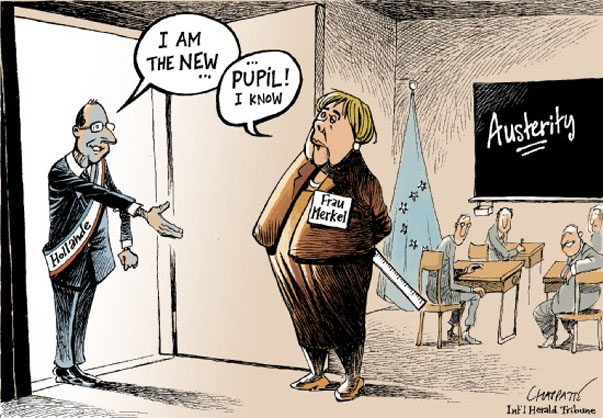
Established at the Millennium Summit of the United Nations in 2000, the Millennium Development Goals (MDG) are eight international development goals that member states and international organizations have committed to help achieve by the year 2015. With the 2013 Millennium Campus Conference being held at Northeastern University, let us refresh ourselves on the current status of these eight goals, one day at a time.

2. Achieve universal primary education
In 2011, 57 million children of primary school age were not being educated – a decrease from 102 million children in 2000. However, upon further analysis, the progress from 2000 onward has been slowing down, dropping by only three million children. At the current rate, the world is unlikely to meet its target by 2015. According to a 2011 report by the UN Development Programme (UNDP), of the 58 million children who are out of school, 32 million are in sub-Saharan Africa. In comparison, steady progress has been made in Southern Asia, where the adjusted net enrollment rate increased from 12 million to 38 million between 2000 and 2011. Poverty, gender, and place of residence are key factors in keeping children out of school. Data collected by the UNDP in 63 developing countries between 2005 and 2011 has shown that children from poor households are “at least three times more likely to be out of school than their richer counterparts.” In addition, girls are more likely to be out of school than boys, with the gender gap widening for secondary education. What is notable, however, is that once girls attend school, they are more likely to reach their final grade of primary school, except in West and East Asia.
In order to address the problem of education, a Learning Metrics Task Force led by the United Nations Educational, Scientific and Cultural Organization (UNESCO) has been formed in order to “develop recommendations on learning stands, metrics and proper implementation practices” in order to aid nations and organizations when attempting to improve the literacy of youths. Beyond UN efforts, UNICEF’s “Let Us Learn” project has successfully enrolled 3,917 five-year-olds (with 60 percent being girls) in ‘school readiness programs’ in rural Bangladesh. From the removal of barriers such as schools fees and miscellaneous costs, investments have been made along with strong decisions by UNICEF and the United Nations Girls’ Education Initiative (UNGEI). Other examples of progress can be seen in Yemen, when UNGEI partnered with the Ministry of Education to create advocacy campaigns raising awareness about the importance of education– especially girls’ education–through mediums such as billboards, posters, and even text messages throughout the country. Another success story of increasing student enrollment is the Global Partnership for Education (GPE), helping over 19 million children go to school with the support of donors pledging over $1.5 billion dollars of the next three years.
The number of children attending primary school saw an upward trend with the rates of enrollment between the years 1990 and 2011 rising dramatically. However, due to the lack of international aid, reports have shown that the progress of universal primary education has now come to a standstill, making the 2015 target a difficult one to meet. However, as long as nations that have pledged to make donations continue to make the commitment, along with affected governments aiding UN efforts by creating incentives for parents to send their children to school, be it school lunch programs or subsidizing school fees, and with the effective projects of groups such as UNICEF and the GPE, the MDG of universal primary education by 2015 is still within reach.
Kaoru Inoue
International Affairs ’17
Citations:
UN Department of Public Information, “Millennium Development Goals and Beyond 2015 Fact Sheet.” http://www.un.org/millenniumgoals/pdf/Goal_2_fs.pdf.
UNICEF, “United Nations Girls’ Education Initiative (UNGEI).” http://www.unicef.org/education/index_44871.html.
United Nations Development Programme, “Millennium Development Goals.” http://www.undp.org/content/dam/undp/library/MDG/english/mdg-report-2013-english.pdf.



